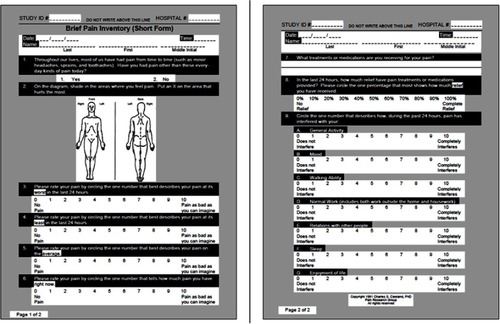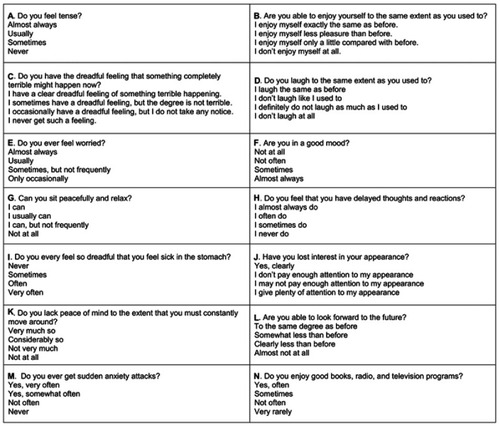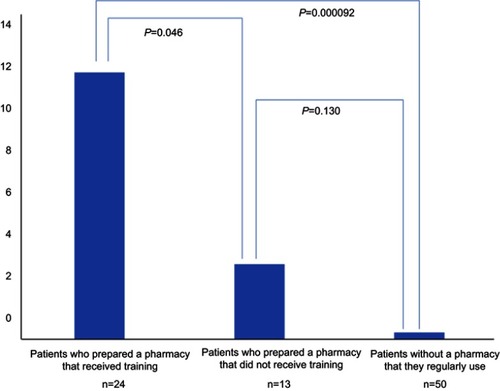Figures & data
Figure 1 Design of the present study. 87 patients were measured at the first visit and at the second visit, and the differences between the three groups were compared.
Abbreviations: NRS, numerical rating scale; BPI, Brief Pain Inventory; HADS, Hospital Anxiety and Depression; QOL, quality of life.

Figure 2 Brief pain index questionnaire. Evaluation was performed in all patients at 11 levels based on the degree of pain and the mood and behavior disturbed by pain. Note: Copyright ©2009. MD Anderson Cancer Center. Reproduced from Cleeland CS. The Brief Pain Inventory User Guide. Available from: https://www.mdanderson.org/documents/Departments-and-Divisions/Symptom-Research/BPI_UserGuide.pdf.Citation11

Figure 3 Hospital Anxiety and Depression Scale questionnaire. To evaluate anxiety and depressive state of patients with physical symptoms, they were asked to attempt a questionnaire comprising 14 items.

Figure 4 Locomo 25 questionnaire. Locomo 25 was developed as a screening tool of locomotive syndrome by a Japanese orthopedic surgeon group in 2008. It comprises 25 questions related to musculoskeletal disorders such as walking disability, difficulty in activities of daily living, or pain in the body.

Table 1 Patient background
Table 2 A comparison of the pain treatment outcomes and compliance according to the presence or absence of a pharmacy regularly used and the presence or absence of training with the hospital
Figure 5 BPI according to the presence or absence of training with a hospital and the presence or absence of a preferred pharmacy. Patients who consulted a trained pharmacy experienced pain relief compared with those who consulted an untrained pharmacy.Abbreviation: BPI, Brief Pain Inventory.

Table 3 A comparison of the treatment outcomes according to the presence or absence of a pharmacy regularly used and the presence or absence of training with the hospital
